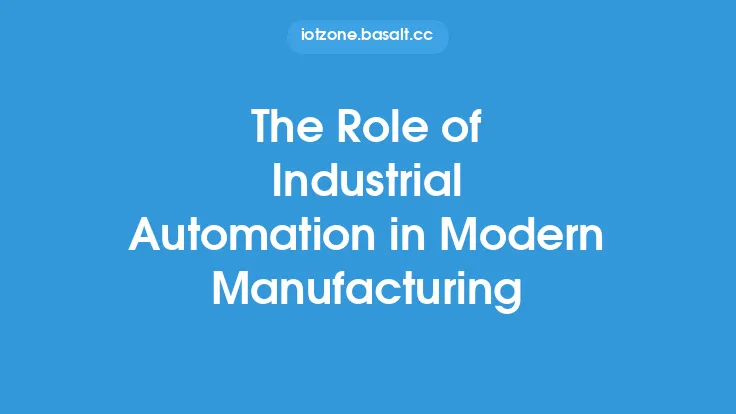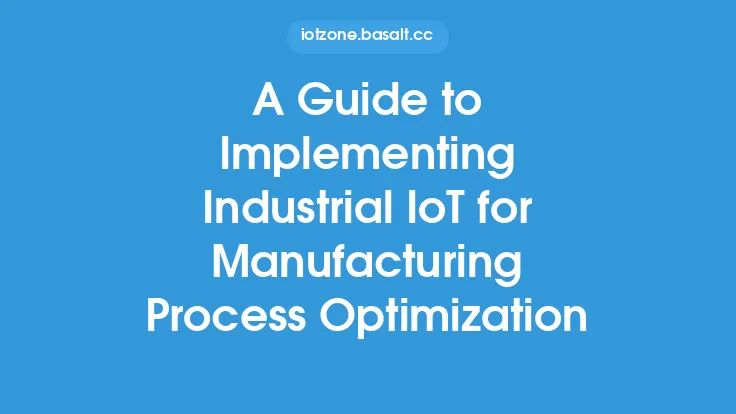Implementing a Manufacturing Execution System (MES) with IoT capabilities can have a transformative impact on manufacturing processes, leading to significant improvements in efficiency, productivity, and quality. At its core, an MES is a software system that tracks and manages the production process in real-time, providing visibility and control over all aspects of manufacturing. By integrating IoT capabilities, manufacturers can leverage the power of connected devices and data analytics to optimize their operations and make data-driven decisions.
What is a Manufacturing Execution System (MES)?
A Manufacturing Execution System (MES) is a software system that manages and tracks the production process in real-time, providing a detailed view of all manufacturing operations. An MES typically includes modules for production scheduling, material management, quality control, and performance analysis. By providing real-time visibility into the production process, an MES enables manufacturers to identify areas for improvement, optimize workflows, and reduce waste. With the addition of IoT capabilities, an MES can collect data from a wide range of sources, including machines, sensors, and other devices, to provide a more comprehensive view of the manufacturing process.
Key Benefits of Implementing an MES with IoT Capabilities
The benefits of implementing an MES with IoT capabilities are numerous and can have a significant impact on manufacturing operations. Some of the key benefits include:
- Improved productivity: By providing real-time visibility into the production process, an MES with IoT capabilities can help manufacturers identify areas for improvement and optimize workflows to increase productivity.
- Enhanced quality control: An MES with IoT capabilities can collect data from quality control sensors and machines, enabling manufacturers to detect defects and irregularities in real-time and take corrective action.
- Reduced waste: By tracking production in real-time, an MES with IoT capabilities can help manufacturers identify areas where waste is occurring and take steps to reduce it.
- Increased efficiency: An MES with IoT capabilities can help manufacturers optimize their production schedules and workflows, reducing downtime and increasing overall efficiency.
- Better decision-making: By providing access to real-time data and analytics, an MES with IoT capabilities can help manufacturers make data-driven decisions and optimize their operations.
How IoT Capabilities Enhance an MES
The integration of IoT capabilities into an MES can have a significant impact on manufacturing operations. Some of the ways that IoT capabilities can enhance an MES include:
- Real-time data collection: IoT devices can collect data from machines, sensors, and other devices in real-time, providing a more comprehensive view of the manufacturing process.
- Automated data analysis: IoT capabilities can automate the analysis of data, providing real-time insights and alerts to manufacturers.
- Predictive maintenance: IoT devices can collect data on machine performance and predict when maintenance is required, reducing downtime and increasing overall efficiency.
- Quality control: IoT devices can collect data from quality control sensors and machines, enabling manufacturers to detect defects and irregularities in real-time.
Technical Requirements for Implementing an MES with IoT Capabilities
Implementing an MES with IoT capabilities requires a number of technical components, including:
- IoT devices: These can include sensors, machines, and other devices that collect data on the manufacturing process.
- Data analytics software: This is used to analyze the data collected by IoT devices and provide real-time insights and alerts.
- Cloud or on-premise infrastructure: This is used to store and process the data collected by IoT devices.
- Integration with existing systems: An MES with IoT capabilities must be integrated with existing systems, such as enterprise resource planning (ERP) and computer-aided design (CAD) systems.
- Cybersecurity measures: These are necessary to protect the data collected by IoT devices and prevent unauthorized access to the MES.
Best Practices for Implementing an MES with IoT Capabilities
Implementing an MES with IoT capabilities requires careful planning and execution. Some best practices to keep in mind include:
- Define clear goals and objectives: Manufacturers should define clear goals and objectives for their MES with IoT capabilities, such as improving productivity or reducing waste.
- Choose the right IoT devices: Manufacturers should choose IoT devices that are compatible with their existing systems and can collect the data they need.
- Develop a comprehensive data analytics strategy: Manufacturers should develop a comprehensive data analytics strategy that includes real-time data analysis and automated alerts.
- Ensure cybersecurity: Manufacturers should ensure that their MES with IoT capabilities is secure and protected from unauthorized access.
- Provide training and support: Manufacturers should provide training and support to employees to ensure that they can effectively use the MES with IoT capabilities.
Conclusion
Implementing a Manufacturing Execution System (MES) with IoT capabilities can have a transformative impact on manufacturing processes, leading to significant improvements in efficiency, productivity, and quality. By providing real-time visibility into the production process and leveraging the power of connected devices and data analytics, manufacturers can optimize their operations and make data-driven decisions. With careful planning and execution, an MES with IoT capabilities can help manufacturers achieve their goals and stay competitive in a rapidly changing industry.





